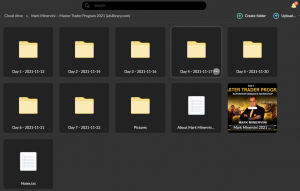AstroFX Forex course-Technical Analysis
By Shaun Powell and Aman Natt
What exactly is meant by fundamentals?
Every day the markets see the release of important pieces of economic data. Be it the BOE (Bank of England) regarding Inflation or Job’s Numbers, the FED minutes, or US CPI or Manufacturing Numbers and Eurozone interest rates etc. This is what we call ‘macroeconomic’ data. And these data releases impact price action, both long term and short term.
Fundamental announcements are a vital part of trading Forex, stocks and pretty much all markets. They help to move the Markets along faster, creating huge liquidity in short periods of time. They also create a lot of volatility, this combined with liquidity can be taken advantage of. The general consensus is and always has been the ‘Markets will follow the economic numbers’.
In Forex, fundamentals mean we are basically pitting one Economy against another. USA V Great Britain, Australia V Japan, Switzerland V USA, New Zealand V Australia.
Let’s break this macroeconomic data down and look to the most important factors that will have the highest impact on the markets/particular currency crosses.
Interest rates – Higher interest rates cause a Currency to appreciate in value due to an increase in investment under higher interest rate climates. However, a stronger currency has it’s own issues, it will make exports more expensive and higher interest rates also make the cost of borrowing more expensive.
Lower interest rates-Cause a currency to de-value, there is less investment, due to the lower rate of return. Interest rates drive the flow of money, which is the very back bone of the FX markets.
Manufacturing data- This is a strong indicator for industrialised countries. It is Bullish if the No’s are higher than expected, and Bearish if the No’s are lower than expected.
Employment Data- Higher employment No’s will be Bullish for that currency as lower employment will be Bearish for a currency. Inflation and consumer confidence, higher inflation and higher consumer confidence is a positive economic signal and therefore has a Bullish effect on a currency. Yet again, weaker Inflation and consumer confidence is a Bearish signal for a currency.
Mastering Your Personal Trading Strategy:
Every trader has unique characteristics; therefore strategies that suit others may not always suit you. Some traders may be patient and so best suited to long-term trading, whilst impatient individuals who prefer to be in and out of the market fit into the intraday category of traders. Whatever your preference of trading, practice it and perfect it; mold it into a personal craft as you would with any other skill. A sure fire way to becoming a better trader is to master just a few techniques, find the set-ups, determine your pattern and what your eyes are accustomed to find. You should only enter trades if they fall in confluence with your preferred price action methodologies and plan.
Sometimes it takes having the mind and the emotions of a robot, in the sense you know your strategy and there is NO questions about it, everything is figured out based on risk, reward and your strategy. Again you must leave your emotions at the door.
Managing Risk Efficiently:
If you do not control your risk on EVERY single trade, you open the door for emotions to dominate your mental activity. We can promise you that once you start down the slippery slope of emotional Forex trading, it can be very hard to stop your slide, or even recognize that you are trading emotionally in the first place! The FX game is about how much you lose, not how much you win.
You can massively eliminate the possibility of becoming an overly-emotional trader by only risking an amount of money per trade that you are 100% OK with losing. You should expect to lose on any given trade! that way you remain aware if it happens and simply move on.
The Double Top and Bottom:
One of the most common chart patterns in trading is the double top/bottom. This pattern appears so frequently on the charts that it alone could easily serve as evidence that price action is not as wildly random as many claim. As mentioned previously, one way to look at price charts is that they are simply an expression of the overall sum of traders sentiment/bias.
The double top/bottom in particular represent a re-testing of temporary lows and highs also known as support and resistance.


 Over 1.000 comments
Over 1.000 comments











